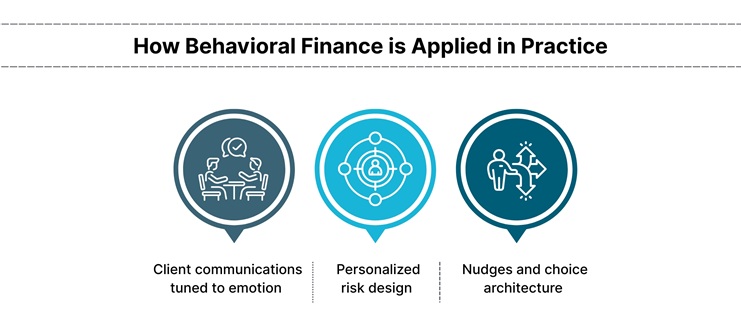
Financial markets are known to be rational systems, but the actual decision-making can hardly be considered rational. Behavioral finance intervenes to explain the effects of modes of thinking, feeling, and prejudice. The most important of these is Investor Psychology, which influences decisions from small trades to global market swings. These human factors not only undermine the conventional economic theories but also provide avenues towards improved decision-making in the modern, complicated world of finance.
The traditional financial models presuppose the logical behavior of investors who do not have any subjective attitude to risk or reward. However, numerous studies indicate that the decisions made in reality tend to be dramatically off track. Such boundaries are a result of cognitive shortcuts and emotional triggers that are very ingrained.
When Rationality Breaks Down
The behavior of investors tends to deviate from the unemotional reasoning of conventional finance. The most important cognitive biases, which include overconfidence, loss aversion, anchoring, and representativeness individually influence decision-making. Let’s see how:
Overconfidence leads many to overestimate their knowledge and timing abilities. A 2025 study of Nepalese investors found that overconfidence was significantly and positively affecting investment choices, whereas loss aversion and representativeness were not statistically significant. Loss aversion causes investors to give losses a greater weight than a similar gain. This bias is seen most vividly where emotion bites 50 percent of investors surveyed in a study that called loss aversion their top irrational factor. It tends to demoralize them to take short-term losses and, in other cases, causes them to lose long-term profits.
Anchoring also catches investors at random points of reference, such as the original prices of purchases. Such an early figure often turns into an internal reference point, and they are reluctant to take a different course of action even when new information indicates otherwise.
Why this matters:
Human emotions such as fear, greed, and regret leave noticeable marks on the movements in the market. Panic-selling by investors can lead to abrupt sell-offs, and greedy investors can overvalue assets far above basic value, a trend that is typical in most asset bubbles of assets. However, emotions do not always destroy; when identified, they can be diverted to influence more considerate actions.
In a recent research study by Ahadzie, Owusu Junior, and Woode (2025), extreme market sentiment, measured by the Fear and Greed Index, is a significant predictor of volatility and changes in the character of returns distribution, like skewness and kurtosis.
The psychology of investors creates visible market trends, and classical theory has difficulty explaining them. These deviations are systematic deviations of human behavior as opposed to rational market efficiency. A leading example is the post-earnings-announcement drift (PEAD). Studies have indicated that stock prices that have positive or negative earnings surprises move in the same direction in the weeks.
A Chinese firm study estimated the drift based on the overnight returns around announcements and found there was strong post-announcement momentum, particularly where investors were more attentive to the surprise.
Momentum anomalies are driven by behavioral biases. In a 2024 study, the authors discovered that investors anchor on the closeness of a stock to its 52-week high. Retail traders particularly adhere to that anchor, which generates long-running short-term price patterns that forecast future returns.
Other repeated patterns include:
These behavioral drivers explain why anomalies such as momentum, overreaction, and underreaction persist longer and are more predictable than conventional finance would anticipate. These patterns can be identified, and this provides investors with an instrument to predict inefficiencies. It also enables policymakers and advisors to shape structure-nudges, decision architecture that is not hypothetical perfection but real human behavior.
Behavioral advisors can make a remarkable contribution to the outcomes of the clients. Those who embrace these principles are better positioned to navigate complex market conditions and deliver outcomes that align with their clients' long-term financial goals.

How are these applied:
Advisors frame and message to minimize panic or overconfidence. Framing can prevent hasty behavior such as panic selling, which was emphasized by Kuramoto in his study of the COVID-19 crisis, whereby positive and negative framing had quantifiable implications on selling behavior.
Risk strategies are tailored according to behavioral profiles based on age, wealth, and self-efficacy data. According to the SSRN investigation of Challa, younger clients tend to be offered more risky portfolios, whereas older clients concentrate on stability.
Basic design adjustments, such as default escalation of savings or rebalancing notices, assist clients in remaining with plans without being on the edge every minute. Framed interventions and nudges are insights that enhance follow-through and minimize bias-informed choices.
Practical benefits:
The intersection between investor psychology and cultural and demographic differences shows trends that cannot be identified in typical frameworks. Emerging studies emphasize that age, gender, education, and cultural norms influence financial decisions and that an understanding of these factors can enhance decision-making.
Key findings:
Behavioral Finance demonstrates that markets are not purely guided by logic but influenced by the intricacies of investor psychology. Being aware of the impact of biases, emotions, and cultural views will help investors make more mindful decisions. With more dynamic financial systems, knowledge about these trends is a prerequisite to stability and long-term success. Investors can break the cycle of short-term response by tightening their belts and gaining a clearer picture of long-term financial strategies.